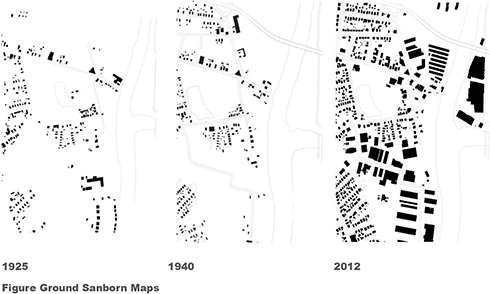Preparing for a resilient future is among the big challenges for the design professions. Landscape Architects, Architects, Urban Designers and Planners are working on visionary concepts to master that challenge. The Rebuild by Design competition, for example, has produced long-term goals and planning parameters for a resilient future. But when does that future start? What happens in the meantime?
The focus of this semester-long studio was on creative interpretations of the urbanized Meadowlands landscape, addressing possible rebuilding and reorganization in the context of housing opportunities, smart streets, and green infrastructure. The students explored the cultural meaning and identity of the landscape considering existing uses, buildings and open spaces, while proposing new building masses that provide spatial framing for (sub)urban public life. Housing and mixed use zones were considered as possible uses that support public open space activities. A main goal was to develop housing and mixed use concepts in accordance with ideas of sustainability, smart growth, appropriate tourism and, last but not least, resilience.

The second half of the studio developed open space concepts for residential zones and recreational areas at a site design scale. This brochure documents the acquired data of the inventory and analysis. Further it includes research papers addressing questions that occurred within the design process and that became of particular interest for individual students. That research and intellectual investigation helped the students to assess their progress throughout the design process and informed the final solutions.

We thank the Borough of Little Ferry for their kind support, the Meadowlands Commission for providing digital plan material and the MIT CAU+ZUS+Urbanisten design team for permission to use their data. The students have explored possible (and not yet possible) solutions through creative design. These ideas may support the public discussion along with the Borough's considerations on how to deal with the challenges and opportunities of the future on the banks of Hackensack River. The only thing we know for sure: tomorrow will be different.


